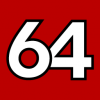-
Posts
12420 -
Joined
-
Last visited
-
Days Won
551
Content Type
Profiles
Forums
Events
Everything posted by Fiery
-
We believe we've found the root cause of the issues concerning Windows 10 April 2018 Update (Version 1803 / Build 17134) based systems. The timer that AIDA64 uses for BCLK measurement is also used by a new Win10 component. Most likely that component is used for GPU profiling. And when AIDA64 and Win10 both use the timer for their own purposes in the same time, the system could become unstable. We've had to disable polling for BCLK, so from now on AIDA64 will only measure BCLK once, and then use the last value until AIDA64 gets restarted. Here's the new AIDA64 beta build that includes the workaround: https://www.aida64.com/downloads/latesta64xebeta
-
We believe we've found the root cause of the issues concerning Windows 10 April 2018 Update (Version 1803 / Build 17134) based systems. The timer that AIDA64 uses for BCLK measurement is also used by a new Win10 component. Most likely that component is used for GPU profiling. And when AIDA64 and Win10 both use the timer for their own purposes in the same time, the system could become unstable. We've had to disable polling for BCLK, so from now on AIDA64 will only measure BCLK once, and then use the last value until AIDA64 gets restarted. Here's the new AIDA64 beta build that includes the workaround: https://www.aida64.com/downloads/latesta64xebeta
-

BugCheck in Windows 1803 (Asus Maximus X Hero) [Win10 1803 timer collision]
Fiery replied to facboy's topic in Bug reports
We believe we've found the root cause of the issues concerning Windows 10 April 2018 Update (Version 1803 / Build 17134) based systems. The timer that AIDA64 uses for BCLK measurement is also used by a new Win10 component. Most likely that component is used for GPU profiling. And when AIDA64 and Win10 both use the timer for their own purposes in the same time, the system could become unstable. We've had to disable polling for BCLK, so from now on AIDA64 will only measure BCLK once, and then use the last value until AIDA64 gets restarted. Here's the new AIDA64 beta build that includes the workaround: https://www.aida64.com/downloads/latesta64xebeta -
We believe we've found the root cause of the issues concerning Windows 10 April 2018 Update (Version 1803 / Build 17134) based systems. The timer that AIDA64 uses for BCLK measurement is also used by a new Win10 component. Most likely that component is used for GPU profiling. And when AIDA64 and Win10 both use the timer for their own purposes in the same time, the system could become unstable. We've had to disable polling for BCLK, so from now on AIDA64 will only measure BCLK once, and then use the last value until AIDA64 gets restarted. Here's the new AIDA64 beta build that includes the workaround: https://www.aida64.com/downloads/latesta64xebeta
-

AIDA64 is freezing PC [Win10 1803 timer collision]
Fiery replied to Forumuser's topic in Bug reports
We believe we've found the root cause of the issues concerning Windows 10 April 2018 Update (Version 1803 / Build 17134) based systems. The timer that AIDA64 uses for BCLK measurement is also used by a new Win10 component. Most likely that component is used for GPU profiling. And when AIDA64 and Win10 both use the timer for their own purposes in the same time, the system could become unstable. We've had to disable polling for BCLK, so from now on AIDA64 will only measure BCLK once, and then use the last value until AIDA64 gets restarted. Here's the new AIDA64 beta build that includes the workaround: https://www.aida64.com/downloads/latesta64xebeta -
We believe we've found the root cause of the issues concerning Windows 10 April 2018 Update (Version 1803 / Build 17134) based systems. The timer that AIDA64 uses for BCLK measurement is also used by a new Win10 component. Most likely that component is used for GPU profiling. And when AIDA64 and Win10 both use the timer for their own purposes in the same time, the system could become unstable. We've had to disable polling for BCLK, so from now on AIDA64 will only measure BCLK once, and then use the last value until AIDA64 gets restarted. Here's the new AIDA64 beta build that includes the workaround: https://www.aida64.com/downloads/latesta64xebeta
-

What is the first thing to do to a new android to make secure ?
Fiery replied to Clif Muggles's topic in Android Forum
Please note that it's not possible to diagnose such issues remotely. You may want to take your phone to a local specialist and have it checked out. -
Done
-
Zenith Extreme has no public BIOS that would support the new Asus ACPI WMI interface yet.
- 59 replies
-
- asus
- temp issues
- (and 5 more)
-
Grouping cannot be 100% consistent about icons, because for example, on systems featuring an Intel iGPU the CPU GT Cores temperature will have a different icon
-

What is "normal" for laptop?
Fiery replied to smilejarik's topic in Benchmarking, system performance
Yes, it's normal for a thin laptop. The drop of CPU core clock speed is normal for low-TDP processors like mobile CPUs, especially for the ones put into thin cases. The CPU has to obey the tight TDP limit, and under heavy stress the only way to do so is to lower the working core clock frequency. The other constraint is the thermal issue: once it crosses the limits, the CPU will either throttle or keep lowering the CPU clock speed to prevent the system from overheating. -
1) Fixed it, thank you. 2) We'll bump VBAT Battery voltage down a line to make it look slightly better. 3) The groups (sections) cannot be renamed permanently. 4) System Stability Test uses a separate sensor module, so the changes you apply to the Computer / Sensor page will not affect the System Stability Test. Thank you for your feedback. Please keep 'em comin'
-
Awesome, thank you for the feedback
-
You can adjust sensor readings in AIDA64 / main menu / File / Preferences / Hardware Monitoring / Correction.
-
Please upgrade to the latest beta version of AIDA64 Extreme available at: https://www.aida64.com/downloads/latesta64xebeta Let me know if it helps.
-
Here's the first AIDA64 beta where you can rename labels on the Computer / Sensor page. Right now it only works if you click on the label to edit it in-place. So there's no right-click context menu or main menu item to perform the renaming. https://www.aida64.com/downloads/latesta64xebeta Let me know how it works Please note that if you want to revert back to the default label, just clear the label (empty string) and press Enter. Also note that we've had to rewrite the whole code behind the Sensor page in order to implement the label renaming feature, so the order of the readings could be slightly different than previously. And also there's a slim chance that we've left minor bugs in there -- which I'm sure you'll catch
-

AIDA64 for Android app crashes on my Galaxy S7 (Android 8.0)
Fiery replied to craigomez's topic in Android Forum
It looks like an OpenGL related issue, since AIDA64 detects OpenGL at startup. Does CPU-Z work on your device right now? Is your S7 the regular global model SM-G930F? -

Recommendation on a wifi connected lcd monitor? (Samsung SPF-87H)
Fiery replied to MOST's topic in Hardware monitoring
What you need to do is: 1) Download the driver ZIP package that you've linked, and extract it to your system somewhere 2) Connect the SPF-87H to one of the USB ports of your computer 3) Start AIDA64, go to main menu / File / Preferences / Hardware Monitoring / LCD / Samsung 4) Tick the checkbox called Enable Samsung SPF LCD support 5) AIDA64 will make the SPF-87H device to switch from mass storage mode to mini-monitor mode, which will change the device that you can see in the Device Manager to the one that you need to install the downloaded driver for 6) Open Device Manager, and install the driver that you've downloaded in step #1 7) Once the driver is installed, close AIDA64, open it again, go to main menu / File / Preferences / Hardware Monitoring / LCD / Samsung 8) Tick the checkbox called Enable Samsung SPF LCD support again. This time it should start working and display the blue splash screen on the SPF-87H screen Let me know if you run into any troubles. Please note that we've gone through that list of to-do's using a SPF-75H screen of ours using the latest 64-bit Windows 10 build (17134.112) earlier today in order to make sure the supplied driver can still be installed properly. -
You can import those files in AIDA64 / main menu / File / Preferences / Hardware Monitoring / LCD / OdoSpace / LCD Items.
-

fixed: Ryzen 2700X platform (Asus ROG Strix X470-F Gaming)
Fiery replied to 00110100's topic in Bug reports
Thank you for your feedback. The system restart is sometimes necessary, because after upgrading to a new AIDA64 build Windows could get confused about the changes in our kernel driver. -

fixed: Ryzen 2700X platform (Asus ROG Strix X470-F Gaming)
Fiery replied to 00110100's topic in Bug reports
Please upgrade to the latest beta version of AIDA64 Extreme available at: https://www.aida64.com/downloads/latesta64xebeta After upgrading to this new version, make sure to restart Windows to finalize the upgrade. Let me know how it works.



